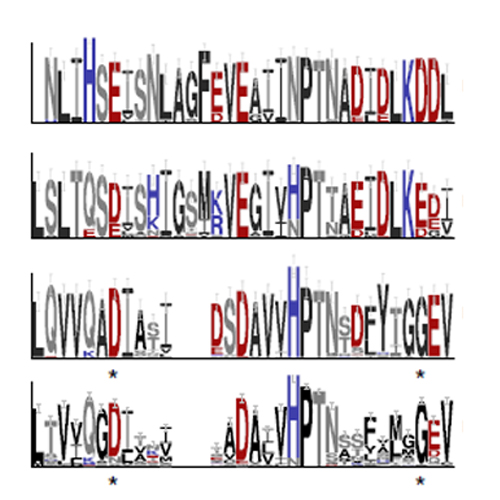Evolution of a histone variant involved in compartmental regulation of NAD metabolism
2021-12-09
Iva Guberovic, Sarah Hurtado-Bagès, Ciro Rivera-Casas, Gunnar Knobloch, Roberto Malinverni, Vanesa Valero, Michelle M. Leger, Jesús García, Jerome Basquin, Marta Gómez de Cedrón, Marta Frigolé-Vivas, Manjinder S. Cheema, Ainhoa Pérez, Juan Ausió, Ana Ramírez de Molina, Xavier Salvatella, Iñaki Ruiz-Trillo, Jose M. Eirin-Lopez, Andreas G. Ladurner and Marcus Buschbeck
Nat Struct Mol Biol 28, 1009–1019, 2021
NAD metabolism is essential for all forms of life. Compartmental regulation of NAD+ consumption, especially between the nucleus and the mitochondria, is required for energy homeostasis. However, how compartmental regulation evolved remains unclear. In the present study, we investigated the evolution of the macrodomain-containing histone variant macroH2A1.1, an integral chromatin component that limits nuclear NAD+ consumption by inhibiting poly(ADP-ribose) polymerase 1 in vertebrate cells. We found that macroH2A originated in premetazoan protists. The crystal structure of the macroH2A macrodomain from the protist Capsaspora owczarzaki allowed us to identify highly conserved principles of ligand binding and pinpoint key residue substitutions, selected for during the evolution of the vertebrate stem lineage. Metabolic characterization of the Capsaspora lifecycle suggested that the metabolic function of macroH2A was associated with nonproliferative stages. Taken together, we provide insight into the evolution of a chromatin element involved in compartmental NAD regulation, relevant for understanding its metabolism and potential therapeutic applications.








